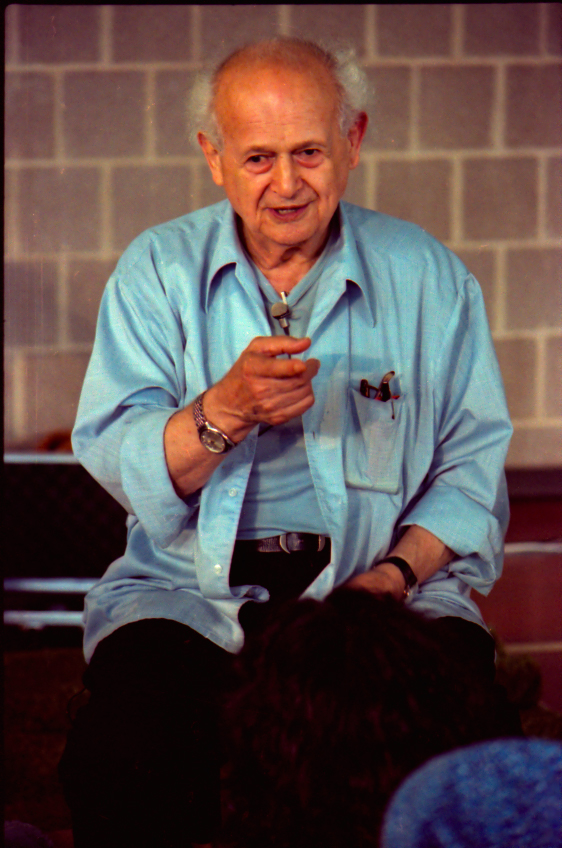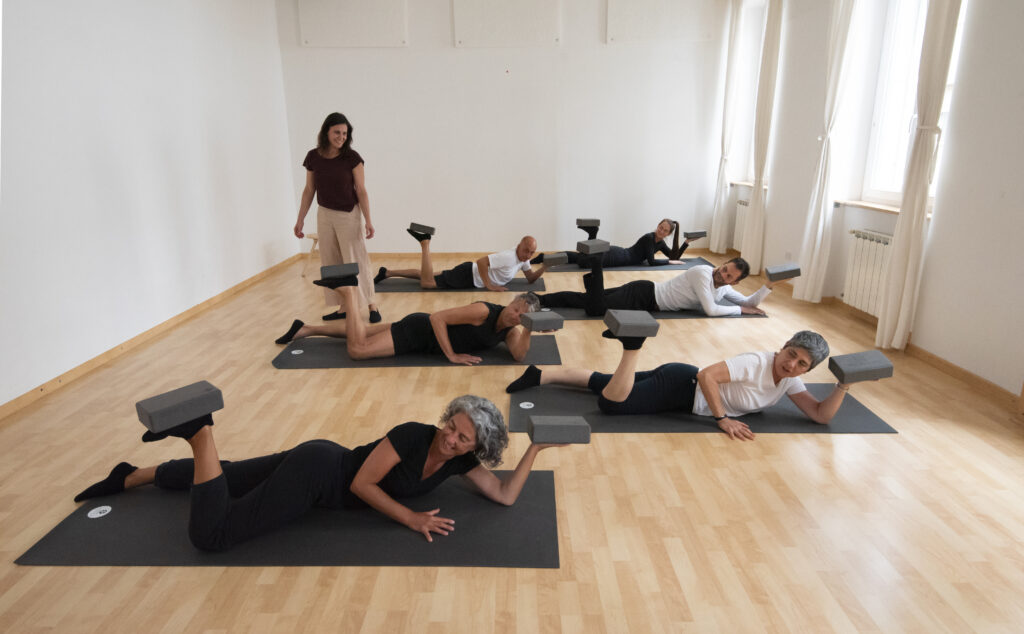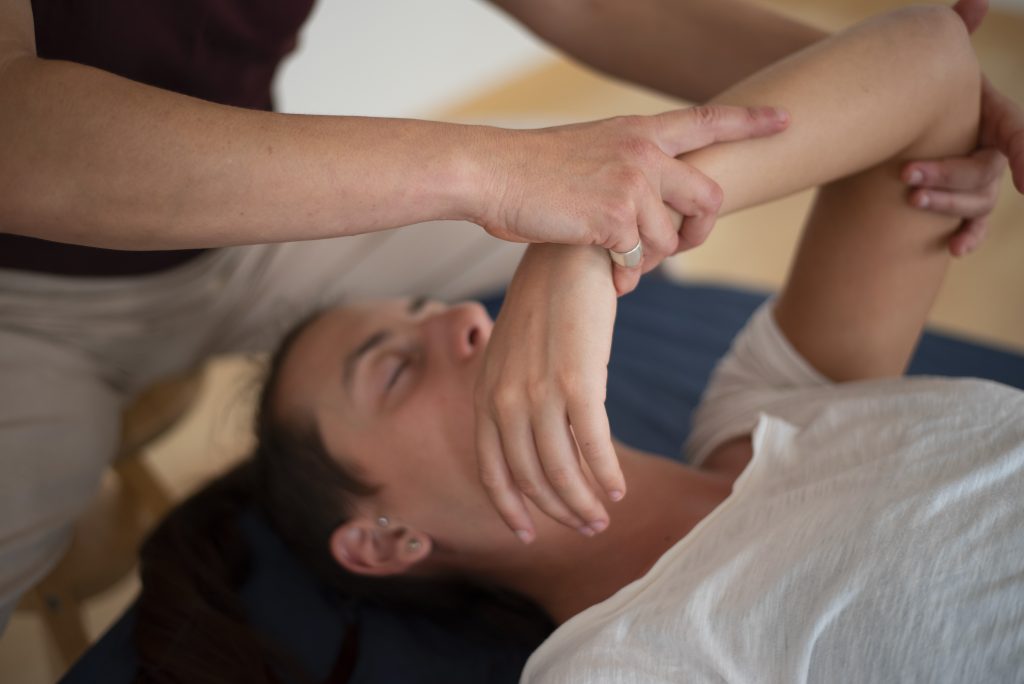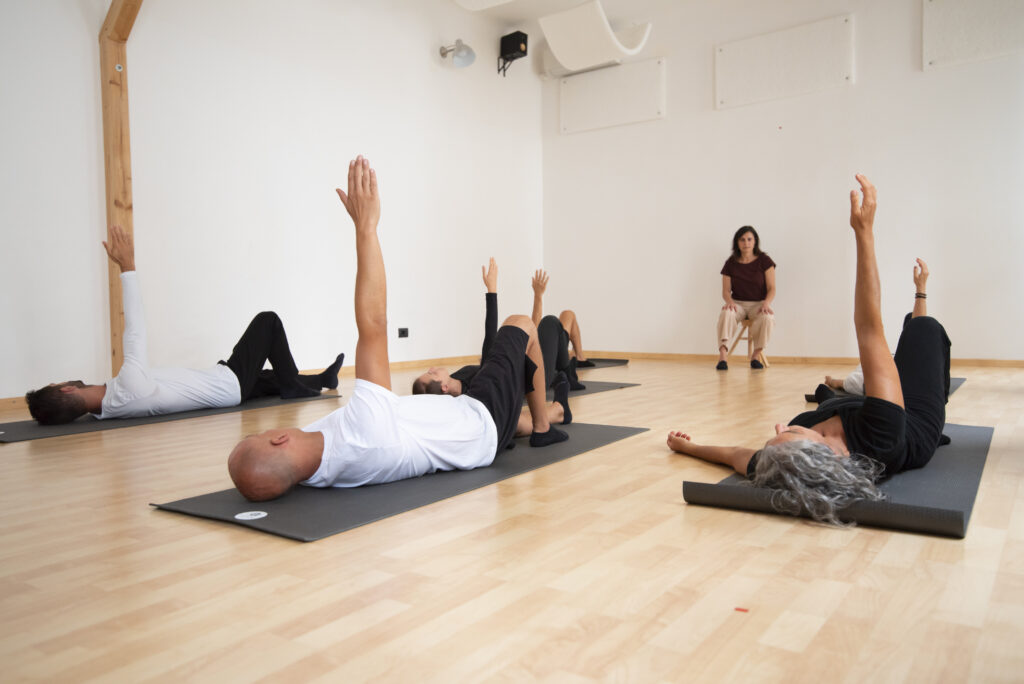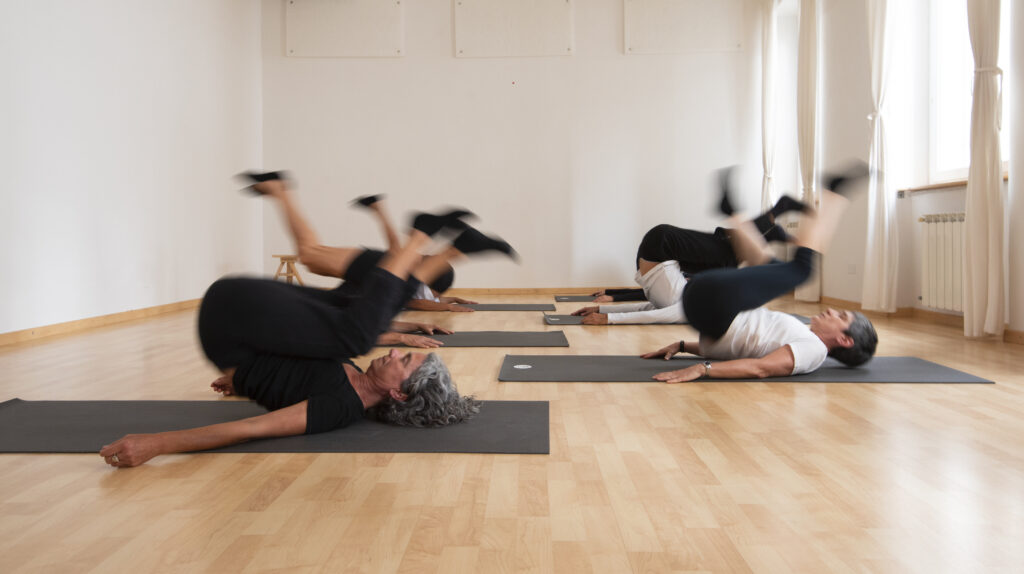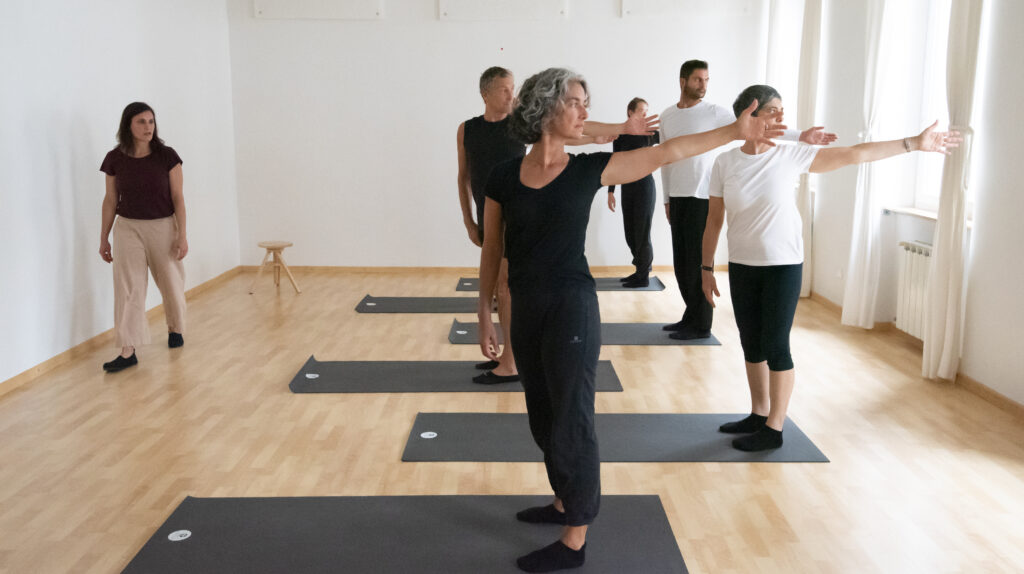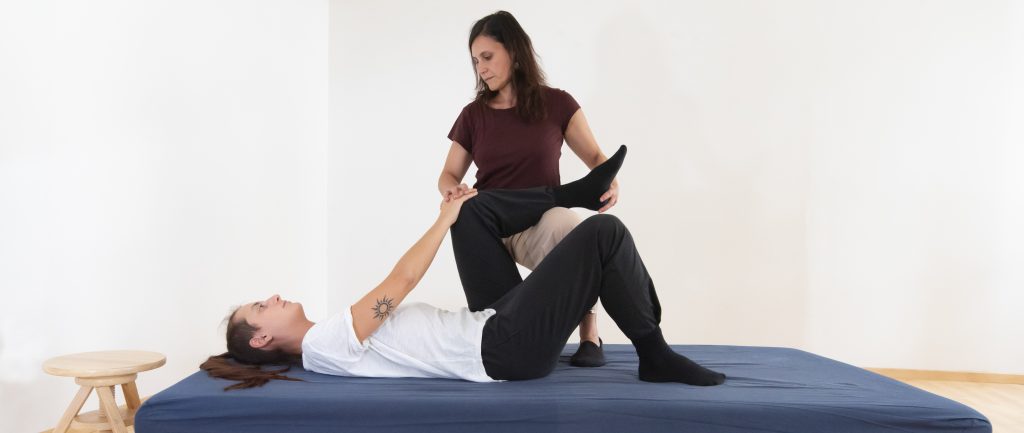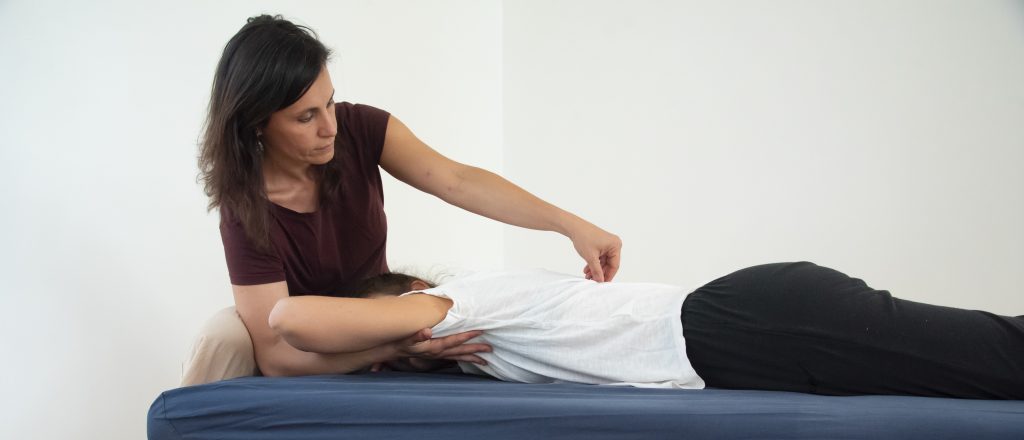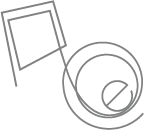Being is movement, every action, relationship, sensation and thought has a dynamic principle. Improving one’s movement corresponds to improving oneself.
To achieve a significant change in posture and improve our general well-being it is essential first of all to increase our level of awareness and become more sensitive to the signals we receive from deep within our system. Many talk about this, but not many movement-based practices really teach it. The Feldenkrais Method, stimulates the nervous system to perceive itself more accurately, the basic premise for change, by working on the bio-mechanical level and at the same time on perception, the senses and the neurocognitive level.
Many posture issues and physical pains are caused by the unconscious activation of a few automatisms: inadequate positions, excessive use of force, overworked joints and muscle groups, attitudes in conflict with fluid movement. Feldenkrais Method lessons are aimed at identifying these habits and help establish more functional movement strategies, enhancing flexibility, coordination, creativity, physical and emotional balance.
To change our own habits we need to experience many different ways of moving and realize that good organization means simplicity, efficiency, pleasure and beauty. Feldenkrais Method lessons suggest an endless variety of movements involving the entire body in different orientations in space. Through an intelligent educational system people are stimulated into learning a new quality of movement. The neuromotor system is encouraged to optimize its potential, achieving an exclusive level of integration between mind and body.
This approach consolidates the new skills, gives people simple and effective tools for self-improvement and maintenance of health. It is extremely useful in functional, physical and neurological, recovery processes.


